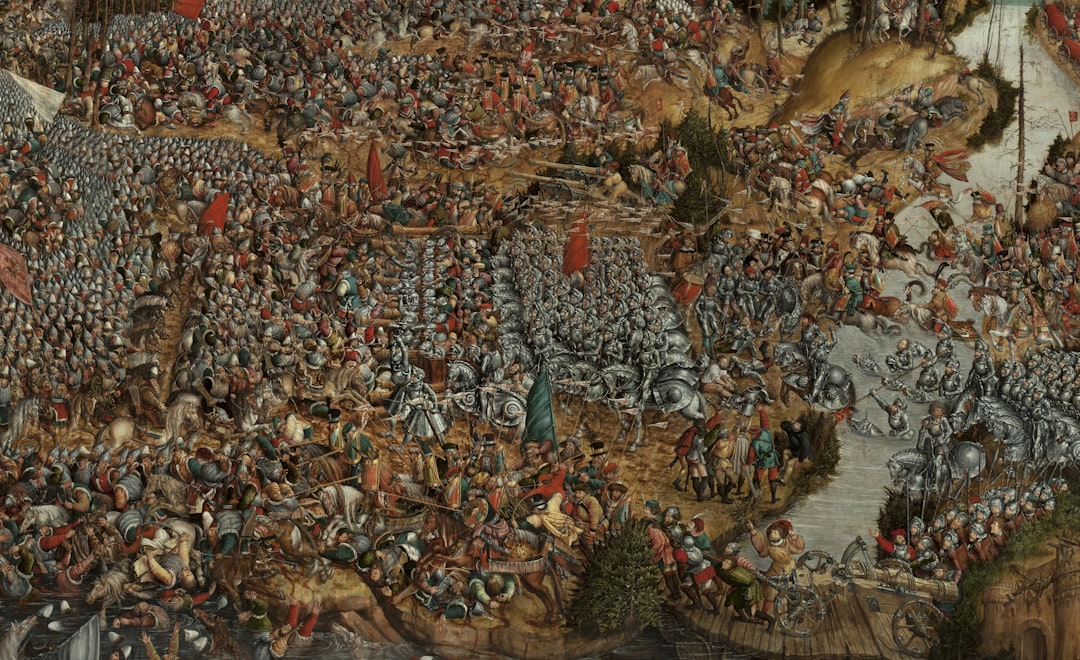Godzilla, the towering behemoth that first stomped onto screens in 1954, is more than just a monster; he embodies the duality of destruction and redemption. Emerging from the ashes of post-war Japan, Godzilla was born from the fears and anxieties of a nation grappling with the consequences of nuclear warfare. His rampages through cities symbolize the catastrophic power of humanity’s technological advancements gone awry.
Yet, as the years have passed, Godzilla has evolved into a complex character, representing not only destruction but also a form of redemption. He often finds himself battling other monstrous threats, positioning him as a reluctant hero who protects humanity from greater evils. This duality resonates deeply with audiences.
You can see how Godzilla’s destructive nature reflects the chaos and turmoil of human existence, while his role as a protector speaks to our innate desire for hope and salvation. In many ways, Godzilla serves as a mirror to our own struggles, reminding us that even in the face of overwhelming odds, there is potential for redemption. This complexity is what makes Godzilla not just a monster, but a symbol of resilience and the possibility of renewal amidst devastation.
Key Takeaways
- Godzilla represents both destruction and redemption, reflecting the duality of human nature and the potential for transformation and growth.
- Godzilla’s enduring popularity across generations and cultures is a testament to the universal appeal of the character and its ability to resonate with diverse audiences.
- The iconic design and symbolism of Godzilla, with its reptilian appearance and atomic breath, have made it a powerful and recognizable cultural icon.
- Godzilla’s impact on popular culture and media is evident in its influence on various forms of entertainment, from films and television to video games and merchandise.
- The evolution of Godzilla throughout the years reflects changing societal and environmental concerns, as well as advancements in technology and storytelling techniques.
The Enduring Popularity of Godzilla Across Generations and Cultures
Godzilla’s popularity has transcended generations and cultures, making him a global icon. From his inception in Japan to his widespread recognition in Hollywood, Godzilla has become a cultural phenomenon that resonates with people from all walks of life. You might find it fascinating how this creature has adapted to various cultural contexts while retaining its core essence.
Each new film or adaptation introduces Godzilla to fresh audiences, ensuring that his legacy continues to thrive. The character’s ability to evolve with the times is a testament to his universal appeal. Whether you are watching the original black-and-white film or the latest CGI spectacle, Godzilla’s story remains relevant.
He embodies themes of fear, survival, and the consequences of human actions—issues that resonate across different cultures and eras. This adaptability is what keeps you engaged, allowing you to connect with Godzilla on multiple levels, whether as a symbol of fear or as a figure of hope.
The Iconic Design and Symbolism of Godzilla

Godzilla’s design is iconic and instantly recognizable. With his massive stature, scaly skin, and menacing roar, he captures attention and evokes a sense of awe. The design itself is laden with symbolism; his reptilian features suggest primal power and raw nature, while his towering height represents the overwhelming force of nature itself.
When you see Godzilla on screen, you can’t help but feel a mix of fear and fascination.
Moreover, Godzilla’s design has evolved over the years, reflecting changes in societal attitudes and technological advancements in filmmaking.
From the suitmation techniques of the early films to the cutting-edge CGI used in modern adaptations, each iteration brings something new while maintaining the essence of what makes Godzilla so compelling. This evolution in design not only showcases artistic creativity but also reinforces Godzilla’s role as a symbol of change—both in himself and in the world around him.
Godzilla’s Impact on Popular Culture and Media
| Category | Metrics |
|---|---|
| Films | 36 films released |
| Box Office | 1.6 billion total gross |
| Merchandise | Countless toys, clothing, and collectibles |
| Video Games | Over 30 video game titles |
| Television | Multiple animated series and TV specials |
Godzilla’s impact on popular culture is profound and far-reaching. You can see his influence in various forms of media, from films and television shows to video games and merchandise. The character has inspired countless filmmakers and artists, leading to a plethora of adaptations that explore different facets of his persona.
His presence in pop culture serves as a reminder of our fascination with monsters and the stories we tell about them. In addition to films, Godzilla has made appearances in comic books, animated series, and even theme park attractions. Each medium offers a unique interpretation of the character, allowing you to experience Godzilla in diverse ways.
This cross-platform presence not only solidifies his status as a cultural icon but also ensures that new generations continue to discover and engage with his story.
The Evolution of Godzilla Throughout the Years
Over the decades, Godzilla has undergone significant evolution, both in terms of character development and thematic exploration. Initially portrayed as a terrifying force of destruction, he gradually transformed into a more nuanced figure who often finds himself at odds with other monsters or human threats. This evolution reflects changing societal attitudes toward monsters; rather than being purely evil, they can embody complex motivations and emotions.
As you watch these films unfold over time, you can appreciate how each era brings its own interpretation of Godzilla. The 1960s saw him become more of a hero in children’s films, while the 1980s and 1990s returned him to his darker roots amid growing environmental concerns. In recent years, filmmakers have embraced this complexity by exploring themes such as climate change and humanity’s impact on nature.
This evolution not only keeps Godzilla relevant but also allows you to engage with deeper philosophical questions about existence and responsibility.
Godzilla’s Role in Confronting Societal and Environmental Issues

Godzilla has often served as a vehicle for addressing pressing societal and environmental issues. You may notice that many films featuring this iconic monster reflect anxieties about nuclear power, pollution, and climate change. By embodying these fears, Godzilla becomes a powerful metaphor for humanity’s struggle against its own creations.
His destructive rampages can be seen as cautionary tales about the consequences of unchecked technological advancement. In recent adaptations, filmmakers have increasingly focused on environmental themes, portraying Godzilla as both a destroyer and a guardian of nature. This duality invites you to consider your own relationship with the environment and the impact of human actions on the planet.
As you watch Godzilla confront other monsters or natural disasters, you are prompted to reflect on your role in addressing these issues in real life. This connection between fiction and reality enhances your understanding of both the character and the world around you.
Godzilla’s Influence on the Monster Movie Genre
Godzilla’s influence on the monster movie genre is undeniable. He set the standard for what it means to be a cinematic monster, inspiring countless filmmakers to create their own creatures that evoke fear and awe. You can trace the lineage of many iconic monsters back to Godzilla; his legacy is evident in films ranging from “King Kong” to “Cloverfield.” The way he combines elements of horror with social commentary has paved the way for more complex narratives within the genre.
Moreover, Godzilla has redefined audience expectations for monster films. You may find it interesting how his character challenges traditional notions of good versus evil; instead of being purely malevolent, he often embodies shades of gray that make him relatable. This complexity encourages filmmakers to explore deeper themes within their own monster narratives, leading to richer storytelling that resonates with viewers on multiple levels.
The Future of Godzilla: Continuing Legacy and New Horizons
As we look toward the future, Godzilla’s legacy remains strong while new horizons beckon for this iconic character. With advancements in technology and storytelling techniques, there are endless possibilities for how Godzilla can be reimagined for modern audiences. You might be excited about upcoming films that promise to explore new dimensions of his character or tackle contemporary issues that resonate with today’s viewers.
The continued collaboration between Japanese filmmakers and Hollywood studios suggests that Godzilla will remain a global phenomenon for years to come. As you anticipate future adaptations, consider how they might reflect current societal challenges or technological advancements. The enduring appeal of Godzilla lies not only in his monstrous form but also in his ability to adapt and evolve alongside humanity itself.
As you engage with this iconic figure moving forward, you’ll find that he continues to inspire conversations about fear, hope, and our collective future on this planet.
One reason why Godzilla remains timeless for fans is the intricate process of creating the iconic monster. A step-by-step guide on how to make Godzilla in Infinite Craft can provide insight into the craftsmanship and dedication that goes into bringing the creature to life. This article from Kaiju News showcases the attention to detail and creativity required to capture the essence of Godzilla, further solidifying the monster’s enduring appeal.
FAQs
What is Godzilla?
Godzilla is a fictional giant monster or kaiju that first appeared in the 1954 Japanese film “Godzilla.” The character has since appeared in numerous films, TV shows, and other media.
Why is Godzilla timeless for fans?
Godzilla remains timeless for fans due to its enduring popularity, iconic status in popular culture, and its ability to evolve and adapt to changing times and societal concerns.
What are some reasons for Godzilla’s enduring popularity?
Some reasons for Godzilla’s enduring popularity include its status as a cultural icon, its appeal to both children and adults, its themes of nuclear warfare and environmentalism, and its ability to resonate with audiences across different generations.
How has Godzilla evolved over the years?
Godzilla has evolved over the years in terms of its appearance, abilities, and the themes explored in its stories. The character has been reimagined and rebooted multiple times to appeal to new audiences while retaining its core characteristics.
What impact has Godzilla had on popular culture?
Godzilla has had a significant impact on popular culture, influencing numerous other films, TV shows, and media, as well as inspiring a dedicated fanbase and a wide range of merchandise and spin-off products.
